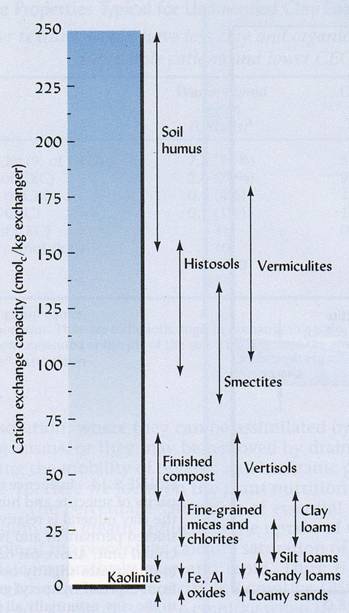Cation exchange
The ‘soil cations’ essential for plant growth include ammonium, calcium, magnesium, and potassium. There are three additional ‘soil cations,’ which are not essential plant elements but affect soil pH. The additional ‘soil cations’ include sodium, aluminum and hydrogen.
Soil cations that are essential to plant growthSoil cations that affect soil pH
- Sodium
- Aluminum
- Hydrogen
The major distinguishing characteristic of cations is their positive charge. Just like a magnet, a positive charge is strongly attracted to a negative charge. When soil particles have a negative charge, the particles attract and retain cations. These soils are said the have a cation exchange capacity. Although most soils are negatively charged and attract cations, some Hawaii soils are exceptions as we will see.
The ‘soil cations’ are further divided into two categories. Ammonium, calcium, magnesium, potassium, and sodium are known as the ‘base cations,’ while aluminum and hydrogen are known ‘acid cations.’
Base Cations- Ammonium
- Calcium
- Magnesium
- Potassium
- Sodium*
* Unlike the other base cations, sodium is not an essential element for all plants. Soils that contain high levels of sodium can develop salinity and sodicity problems.
Acid Cations- Aluminum
- Hydrogen
The words ‘base’ and ‘acid’ refer to the particular cation’s influence on soil pH. As you might suspect, a soil with a lot of acid cations held by soil particles will have a low pH. In contrast, a highly alkaline soil predominately consists of base cations.
Cations in the soil compete with one another for a spot on the cation exchange capacity. However, some cations are attracted and held more strongly than other cations. In decreasing holding strength, the order with which cations are held by the soil particles follows: aluminum, hydrogen, calcium, potassium and nitrate, and sodium.



0 Comments:
Post a Comment